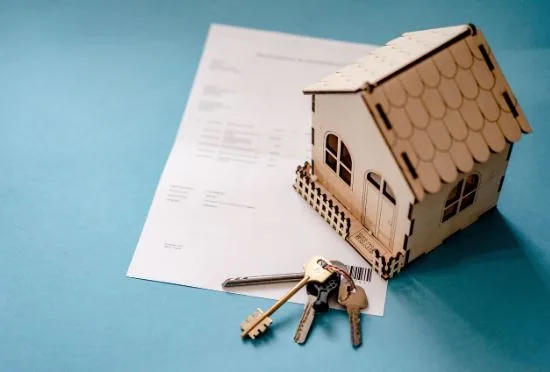Small Restaurants Face Growing Challenges with Aging Kitchen Equipment
Running a small restaurant often means balancing creativity, service quality, and operational costs. Yet one issue that many owners underestimate is the impact of aging kitchen equipment. From the fryer to the refrigeration system, every piece of equipment plays a crucial role in keeping operations smooth. When these essential tools begin to fail, it affects everything from food quality to staff productivity. Understanding how to manage and maintain equipment effectively can make all the difference between consistent service and costly disruptions.
The Hidden Costs of Aging Kitchen Equipment
Old appliances bring more than occasional frustration. They drain efficiency, increase running costs, and can compromise food safety. When ovens or grills take longer to reach the right temperature, or when freezers fail to hold their chill, ingredients spoil and service slows. These setbacks lead to financial losses, both in wasted food and dissatisfied customers.
The use of reliable commercial cooking products can greatly reduce these risks. Investing in dependable appliances ensures more consistent performance and fewer unexpected repairs. It also allows restaurants to maintain quality standards and avoid sudden breakdowns that could interrupt service.
Aging equipment often hides additional costs. Energy bills increase as appliances struggle to perform. Frequent breakdowns lead to expensive emergency callouts, and replacement parts for older models can be harder to source. In many cases, restaurants continue to spend on temporary fixes when a long-term solution—such as upgrading equipment—would be more cost-effective.
Common Failure Points in Kitchen Systems
Recognising the areas most prone to failure can help restaurant owners act before problems escalate. Temperature control components are among the first to fail due to heat exposure and constant adjustments. When these mechanisms begin to malfunction, cooking consistency declines and food safety becomes harder to maintain.
Heating elements in ovens degrade over time, leading to uneven cooking. Burners can clog with grease and debris, resulting in inconsistent flames or ignition problems. Steam equipment and dishwashers are particularly vulnerable to mineral buildup, which restricts water flow and damages internal components. Regular cleaning and maintenance help prevent these issues, but once wear becomes visible, replacement may be the only option.
Recognising Warning Signs Early
Spotting early warning signs is vital to avoid complete equipment failure. Fluctuating temperatures, extended preheating times, and inconsistent refrigeration performance indicate that key components may be reaching the end of their service life. In a busy kitchen, small issues like these can escalate quickly, causing delays and increased costs.
Energy consumption can also provide valuable clues. A sudden rise in electricity or gas usage often suggests that equipment is working harder than it should. Visual indicators such as corrosion, yellowing flames, or condensation buildup should never be ignored. These signs often point to internal damage that could lead to safety hazards or permanent equipment loss.
Encouraging staff to report performance changes immediately helps address small faults before they worsen. A proactive approach reduces downtime and keeps kitchens running efficiently.
Preventative Maintenance Strategies
Preventative maintenance is one of the most reliable ways to extend equipment life. Routine cleaning, calibrating temperature settings, and checking seals or filters should be part of every restaurant’s regular schedule. These small efforts can prevent major breakdowns later.
Documentation plays a key role in effective maintenance. Keeping a detailed log of cleaning dates, repair work, and service visits helps managers identify patterns and plan replacements in advance. Training staff to conduct simple inspections, such as checking for grease buildup or damaged wiring, further reduces the risk of unexpected issues.
Professional Maintenance and When to Call for Help
Some maintenance tasks can be handled internally, but others require professional attention. Basic cleaning and visual inspections are safe for staff, while licensed technicians should always manage gas, electrical, and refrigeration repairs. Attempting complex fixes without the proper expertise can void warranties and create safety hazards.
Establishing a partnership with a reliable service provider can be beneficial. A consistent technician familiar with your kitchen layout and equipment history can diagnose problems faster and provide tailored recommendations. Service contracts often help businesses manage costs by setting predictable maintenance fees and minimising surprise expenses.
Choosing and Managing Replacement Parts
When repairs are necessary, sourcing the right replacement parts ensures reliability and longevity. Original manufacturer parts tend to offer the best fit and warranty coverage, although they can be more expensive. Aftermarket parts might be cheaper but can sometimes cause compatibility issues.
Maintaining a parts inventory list with model and serial numbers simplifies ordering. Photographs of equipment and parts also make communication with suppliers easier. Purchasing from trusted vendors helps avoid delays and ensures quality replacements.
Tracking how replacement parts perform can highlight recurring issues with specific appliances. If the same part repeatedly fails, it may indicate a deeper mechanical problem that requires full equipment evaluation rather than another quick fix.
Technology and Smart Monitoring Solutions
Technology now plays an important role in kitchen management. Many restaurants use digital tools to schedule maintenance, record service logs, and monitor equipment performance. Simple software systems can generate reminders for cleaning and inspection dates, preventing missed tasks that might lead to equipment failure.
Smart sensors can be installed in ovens, refrigerators, and freezers to track performance in real time. These devices alert staff when temperatures fall outside safe ranges, allowing for immediate corrective action. Over time, data collected from these tools can help identify underperforming equipment and justify upgrades.
Strengthening Kitchen Efficiency for Long-Term Success
Small restaurants depend on their kitchen equipment as much as their menus. Managing aging appliances with preventive maintenance, smart technology, and timely upgrades helps safeguard daily operations. Investing in dependable tools, creating maintenance schedules, and forming partnerships with qualified professionals all contribute to a more efficient, reliable kitchen.



